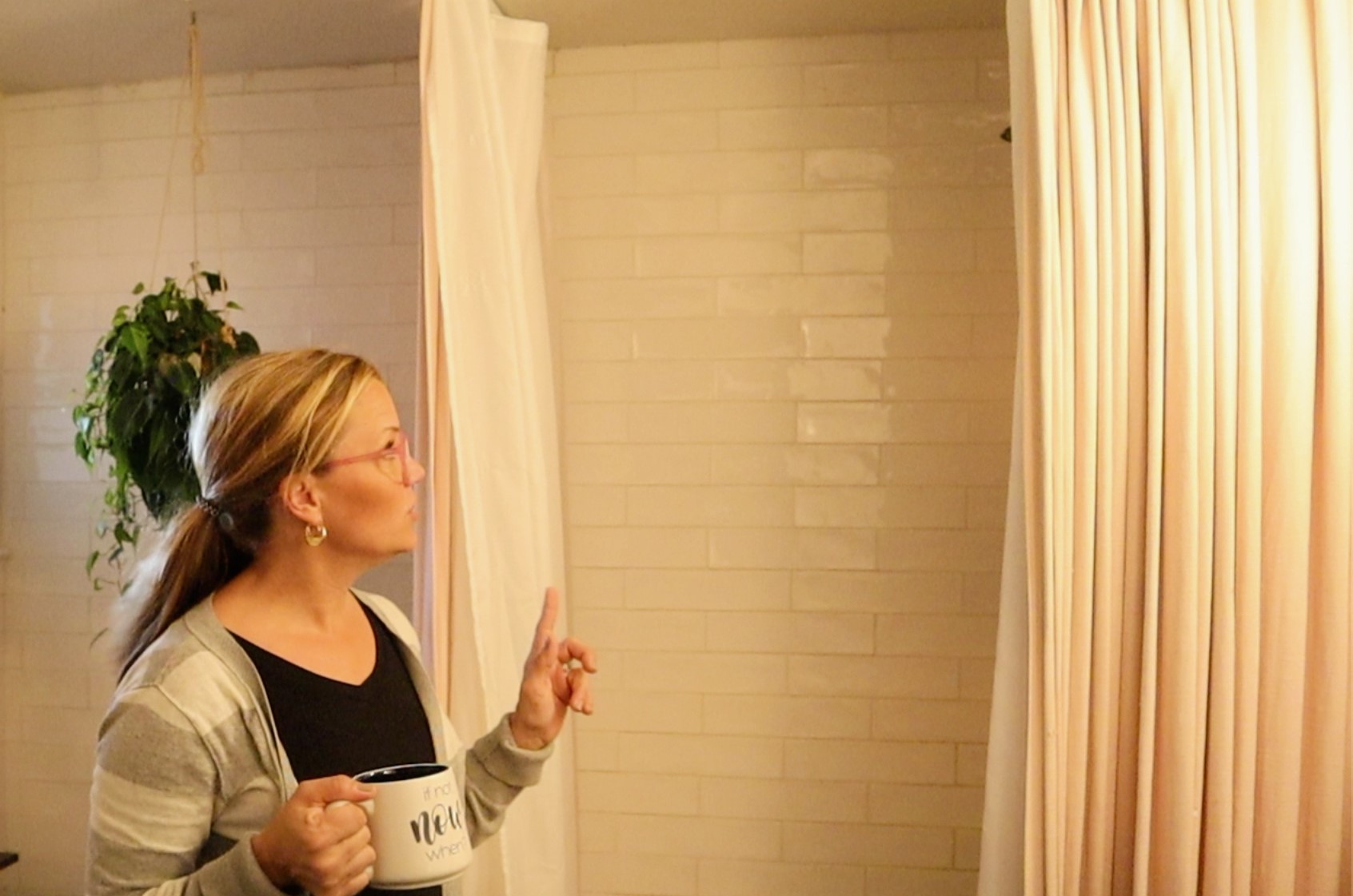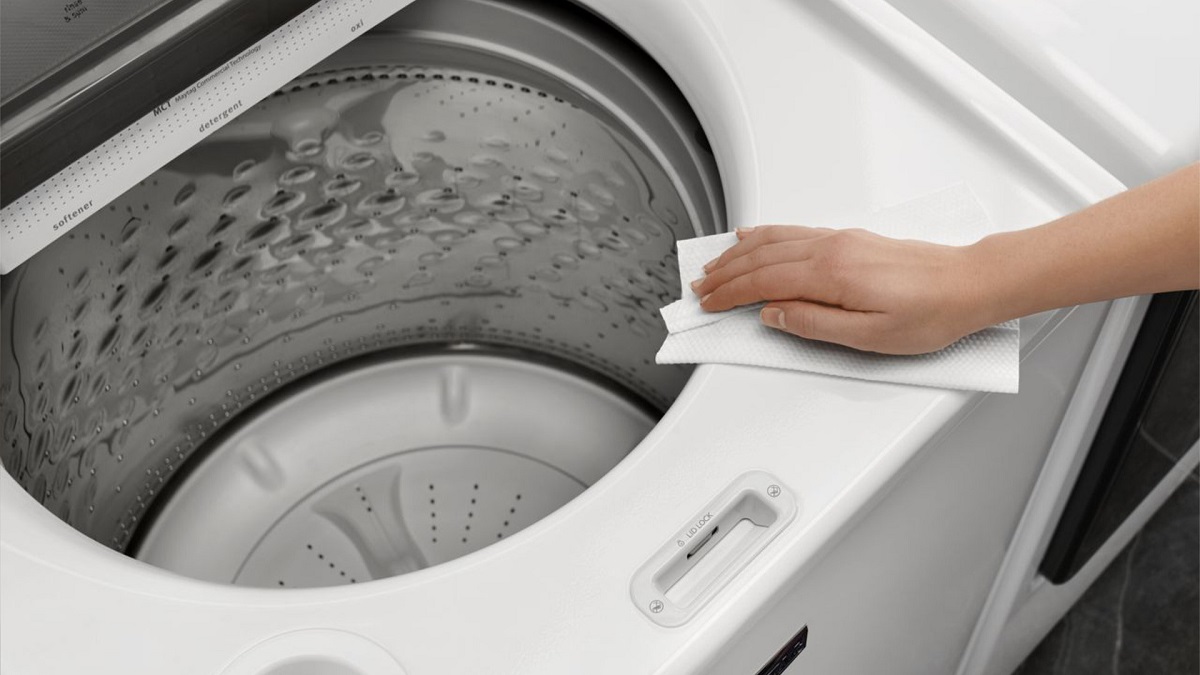Home>Home Appliances>Laundry Appliances>How To Clean A Plastic Shower Curtain Liner Without A Washing Machine


Laundry Appliances
How To Clean A Plastic Shower Curtain Liner Without A Washing Machine
Modified: October 19, 2024
Learn how to clean a plastic shower curtain liner without a washing machine using simple laundry-appliance-free methods. Keep your bathroom fresh and mold-free!
(Many of the links in this article redirect to a specific reviewed product. Your purchase of these products through affiliate links helps to generate commission for Storables.com, at no extra cost. Learn more)
Introduction
Cleaning a plastic shower curtain liner is a task that often gets overlooked in our regular cleaning routines. However, neglecting this essential chore can lead to the buildup of soap scum, mildew, and bacteria, compromising the hygiene and aesthetics of your bathroom. Fortunately, you don't need a washing machine to restore your plastic shower curtain liner to its pristine condition. With a few simple materials and a little bit of effort, you can effectively clean your shower curtain liner and maintain a fresh, inviting bathroom environment.
In this comprehensive guide, we will walk you through the step-by-step process of cleaning a plastic shower curtain liner without the need for a washing machine. Whether you're dealing with unsightly stains, mildew, or just want to give your shower curtain liner a thorough cleaning, the following methods will help you achieve a sparkling clean result. By following these techniques, you can extend the lifespan of your plastic shower curtain liner and ensure that your bathroom remains a clean and inviting space for you and your family.
So, gather your cleaning supplies and get ready to bid farewell to soap scum and mildew. With our easy-to-follow instructions and helpful tips, you'll soon have a fresh, clean plastic shower curtain liner that enhances the overall appeal of your bathroom. Let's dive into the materials needed and the step-by-step cleaning process to rejuvenate your plastic shower curtain liner without the use of a washing machine.
Key Takeaways:
- Say goodbye to soap scum and mildew on your plastic shower curtain liner! With simple ingredients like vinegar and baking soda, you can easily clean and maintain a fresh, inviting bathroom environment without a washing machine.
- Keep your shower curtain liner clean and fresh by establishing a regular cleaning schedule, promoting ventilation, and using a squeegee to prevent mildew growth. With these easy tips, you can maintain a hygienic bathroom without frequent deep cleaning.
Read more: How To Clean A Shower Curtain And Its Liner
Materials Needed
To effectively clean a plastic shower curtain liner without a washing machine, you'll need a few basic materials that are readily available and easy to use. These items are essential for removing soap scum, mildew, and other common stains that can accumulate on a shower curtain liner over time. By gathering the following materials, you'll be well-equipped to tackle the cleaning process and restore your shower curtain liner to its original freshness.
-
White Vinegar: This versatile household staple is a powerful natural cleaner that effectively eliminates soap scum, mold, and mildew. Its acidic properties make it an ideal solution for breaking down stubborn stains on plastic shower curtain liners.
-
Baking Soda: Known for its gentle abrasive qualities, baking soda is an excellent choice for scrubbing away tough stains and residue without causing damage to the plastic material.
-
Lemon Juice: With its natural antibacterial and antifungal properties, lemon juice is a valuable addition to your cleaning arsenal. It not only helps to combat mildew but also leaves behind a fresh, citrusy scent.
-
Microfiber Cloth or Sponge: Opt for a soft microfiber cloth or sponge to apply the cleaning solutions to the shower curtain liner. These gentle materials are effective for scrubbing without scratching the plastic surface.
-
Old Toothbrush: A small, old toothbrush can be repurposed as a handy tool for targeting hard-to-reach areas and crevices on the shower curtain liner.
-
Warm Water: Having access to warm water is essential for creating the cleaning solutions and rinsing off the cleaning agents from the shower curtain liner.
-
Rubber Gloves: While not mandatory, wearing rubber gloves can protect your hands from prolonged exposure to cleaning solutions and ensure a more comfortable cleaning experience.
By gathering these materials, you'll be well-prepared to embark on the journey of revitalizing your plastic shower curtain liner. With the right tools at your disposal, you can effectively tackle stains and mildew, restoring your shower curtain liner to a fresh, clean state without the need for a washing machine.
Soak the plastic shower curtain liner in a mixture of warm water and white vinegar for a few hours. Then scrub it with a sponge and rinse with water. Hang it to dry.
Steps to Clean a Plastic Shower Curtain Liner
-
Remove the Curtain Liner: Start by carefully removing the plastic shower curtain liner from the hooks or rings. This will allow you to work on the cleaning process more effectively and ensure that all areas of the liner are thoroughly addressed.
-
Prepare the Cleaning Solution: In a small bucket or container, mix equal parts of white vinegar and warm water. This solution will serve as a potent yet gentle cleanser for removing soap scum, mildew, and other stains from the plastic shower curtain liner.
-
Apply the Cleaning Solution: Using a soft microfiber cloth or sponge, dip it into the prepared vinegar and water solution. Gently scrub the entire surface of the shower curtain liner, paying particular attention to areas with visible stains or mildew buildup. The acidic nature of the vinegar will help break down the grime and restore the liner's cleanliness.
-
Target Stubborn Stains with Baking Soda: For tougher stains or areas with stubborn residue, sprinkle a small amount of baking soda onto the damp cloth or sponge. With gentle pressure, scrub the affected areas in a circular motion. The mild abrasive properties of baking soda will aid in lifting and removing the persistent stains without causing damage to the plastic material.
-
Combat Mildew with Lemon Juice: To address any lingering mildew and impart a fresh scent to the curtain liner, apply undiluted lemon juice directly onto the affected areas. Allow the lemon juice to sit for a few minutes before gently scrubbing with the cloth or sponge. The natural antibacterial properties of lemon juice will help eliminate mildew while leaving behind a pleasant citrus aroma.
-
Rinse Thoroughly: Once the cleaning process is complete, rinse the entire shower curtain liner with warm water to remove any residual cleaning solution, vinegar, baking soda, and lemon juice. Ensure that all cleaning agents are completely washed away to prevent any potential residue from affecting the liner's appearance.
-
Air Dry and Rehang: After rinsing, allow the plastic shower curtain liner to air dry completely. Once dry, rehang the curtain liner back onto the hooks or rings in the shower area, ready to showcase its renewed cleanliness and freshness.
By following these simple yet effective steps, you can successfully clean a plastic shower curtain liner without the need for a washing machine. This method not only restores the appearance of the liner but also helps maintain a hygienic bathroom environment for you and your family.
Tips for Maintaining a Clean Shower Curtain Liner
Maintaining a clean shower curtain liner is essential for prolonging its lifespan and preserving a hygienic bathroom environment. After investing time and effort into cleaning the plastic shower curtain liner, implementing proactive measures to prevent future buildup of soap scum, mildew, and stains is crucial. By incorporating the following tips into your regular cleaning routine, you can effectively preserve the cleanliness and freshness of your shower curtain liner without the need for frequent deep cleaning.
-
Regular Cleaning Schedule: Establishing a regular cleaning schedule for your shower curtain liner can significantly reduce the accumulation of grime and mildew. Consider incorporating a quick wipe-down of the liner with a mild cleaning solution on a weekly or bi-weekly basis to prevent the buildup of stubborn stains.
-
Ventilation: Proper ventilation in the bathroom plays a vital role in preventing moisture-related issues that contribute to mildew growth. After showering, ensure that the bathroom is well-ventilated to allow excess moisture to dissipate, reducing the likelihood of mildew forming on the curtain liner.
-
Shake Off Excess Water: After each shower, take a moment to shake off excess water from the shower curtain liner. This simple action can help minimize the accumulation of moisture on the liner, reducing the potential for mildew and mold to develop.
-
Use a Squeegee: Keep a squeegee handy in the bathroom and use it to remove water droplets from the shower curtain liner after showering. By swiftly running the squeegee across the surface of the liner, you can prevent water from lingering and creating an environment conducive to mildew growth.
-
Avoid Contact with Toiletries: To prevent staining and residue buildup, avoid allowing toiletry bottles, such as shampoo and body wash, to come into direct contact with the shower curtain liner. Hang a shower caddy or organizer to keep toiletries off the liner's surface.
-
Machine Washable Liners: If your shower curtain liner is machine washable, take advantage of this feature by periodically laundering it according to the manufacturer's instructions. This can help maintain the cleanliness of the liner and extend its usability.
By incorporating these practical tips into your bathroom maintenance routine, you can effectively preserve the cleanliness and freshness of your plastic shower curtain liner. With consistent care and proactive measures, you can enjoy a hygienic and visually appealing bathroom environment while minimizing the need for frequent deep cleaning of the shower curtain liner.
Frequently Asked Questions about How To Clean A Plastic Shower Curtain Liner Without A Washing Machine
Was this page helpful?
At Storables.com, we guarantee accurate and reliable information. Our content, validated by Expert Board Contributors, is crafted following stringent Editorial Policies. We're committed to providing you with well-researched, expert-backed insights for all your informational needs.
















0 thoughts on “How To Clean A Plastic Shower Curtain Liner Without A Washing Machine”